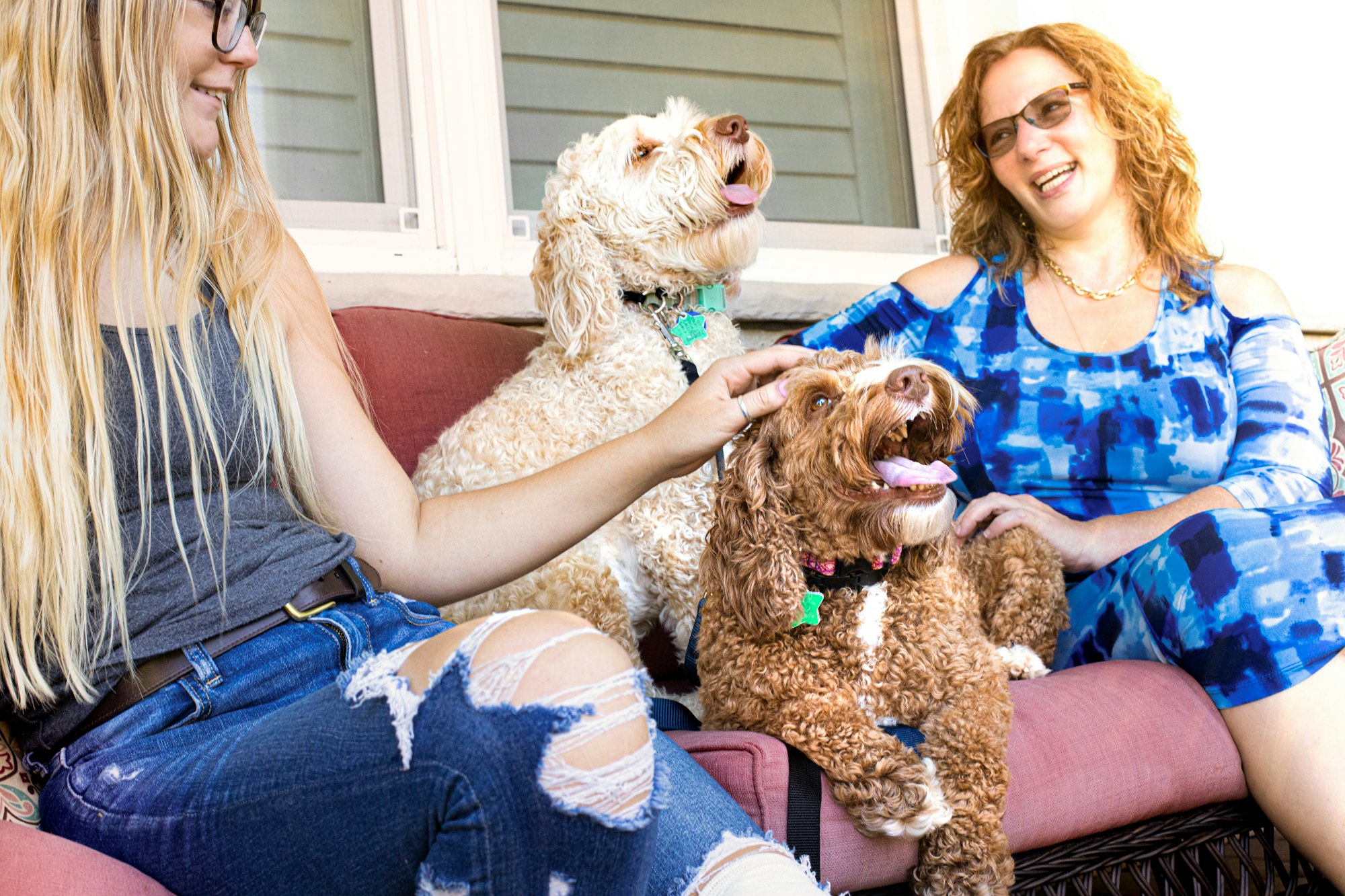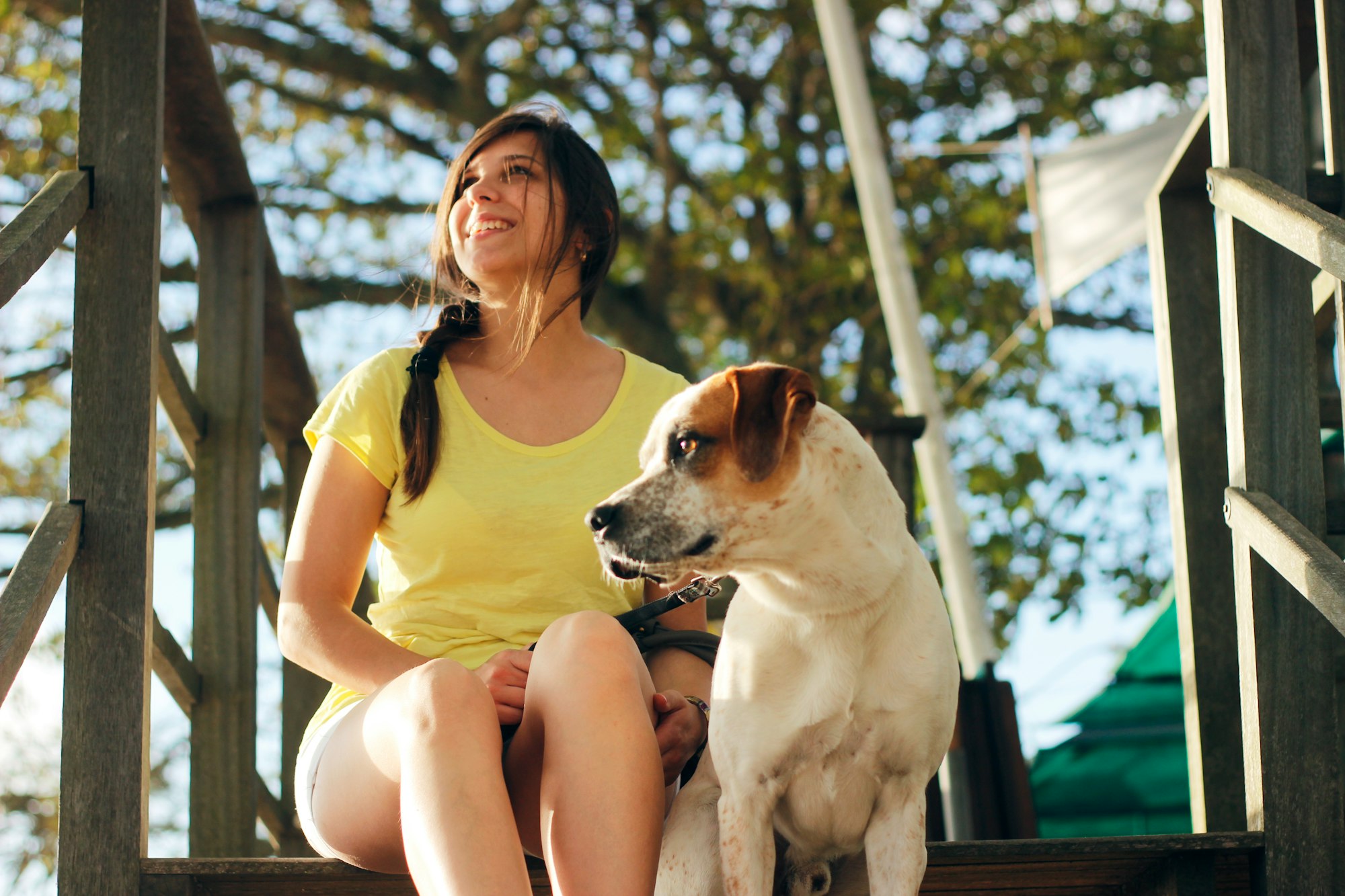Humans and dogs have a long relationship that goes back up to some estimates of 40,000 years. It wasn’t always an amicable one since we were competitors for food. Nevertheless, it has evolved into one that is mutually beneficial. It’s not a stretch to think that because we share our homes—and sometimes our beds—with our canine companions that we’d get to know each other well.
They know when we’re not pleased with them and also when we’re sad. The next question is the flip side of the coin, and do dogs understand smiles? The truth is that dogs do an excellent job of learning about us. They can read us like a dimestore novel. But isn’t that great when your pup puts his head on your knee when you’ve had a bad day at work? After all, that’s why we call them our best friends.

Similar Biology and Physiology
We can look first at the basis of understanding the biology and physiology of humans and dogs to draw conclusions about their reading our smiles. It turns out that there is a lot of evidence to share a keen knowledge that our pets may possess. Humans and dogs share 84% of their DNA. That explains why we share many common diseases, such as cancer.
We also have similar instincts. We express many of our emotions similarly. Growls and scowls translate readily between us. Happiness and excitement are well understood on both parts. If you’re feeling elated and jumping up and down, your pup will likely join in and have just as much fun as you. It follows then that dogs can understand that you’re smiling and will likely do the same thing.
Reading Positive Emotions
Research has shown that dogs are emotionally intelligent. They can discriminate between the feelings we convey. The fact that both people and canines smile suggests that it’s a shared emotion and one that both species understand well. However, it doesn’t stop there since smiling often involves other acts such as speech.
We mentioned the shared genetic history of canines and humans. That shows up in the similar structures in the brains of both species, particularly with voice-sensitive areas. This evidence suggests that dogs understand the whole scope of expressing positive emotions that include smiling. After all, what is the one thing you usually do when you are happy? You have a big smile on your face!

The Dark Side
Of course, the emotions of dogs and people don’t always reside on the happy side of things. Sometimes, we get angry or sad. Science has revealed that our pets know us much better than we think. It’s not just the positive emotions but the negative ones that also appear on the radars of canines. Dogs can read the negative ones as well.
Some evidence suggests that our pets know when we’re not being honest with them. They can even detect when it’s just bad intel versus flat-out lying. It could lie with the fact that dogs learn us much better than we realize. They can read our body language that may elude other humans. They see what we don’t see and can call out the BS for what it is.
That’s not unusual or unexpected. After all, our pets live with us and experience the full spectrum of human emotions. It makes sense that they would pick up on both the positive and negative sides and respond likewise. We think it’s a fascinating example of these relationships. It’s also beneficial for dogs to learn how to read us.
Canine Communication
We can extend this discussion to what dogs understand about other canids if a smile is part of the mix. Wolves, coyotes, and dogs all share a common ancestry. Therefore, communication is similar between these animals and other ones that use the same ways to show their emotions. We know that enemies or rivals can show their displeasure. It’s evident with growling and other behaviors.
Canines also show positive emotions, which we may interpret as smiles on a different level. Think of puppies playing together. Sure, there is some roughhousing, but there are some happy things going on, too. We respond similarly with smiles, laughing, and other things that the ever-alert dog realizes what’s going on in its level.

The Effectiveness of the Visual Cues
The essential thing to understand about dogs is that they are keenly aware of their environment. In the wild, things stay pretty static. Noticing the changes is vital to their survival. It can make the difference between life and death. Therefore, it behooves our pets to understand our emotions wherever they exist on the spectrum. It’s not a stretch to realize that dogs can understand our smiles, frowns, and scowls.
Dogs’ awareness is much more refined than ours. That can help you put this trait into context. Their ability comes from a survival instinct that becomes clearer when we think about the earlier relationship between humans and dogs. We began as competitors. Now we are companions. It makes sense that canines would recognize the difference since it benefits them.
If you have a positive relationship with your dog, he’s more likely to be well-fed. He’ll get treats and walks for mental stimulation. He’ll get all the attention he needs to feel emotionally stable. In turn, he will protect your property and family. He’ll have a home and a safe place to sleep at night. Therefore, it benefits a dog to know when humans are smiling because it means that all things are well.
Final Thoughts
Dogs are amazing animals. It may surprise us to know how well they can read our emotions. They know when we’ve had a bad day. They also realize when we’re not too happy with them. However, the greatest part of our relationship is that they know when we’re happy. It allows us to connect on a much more personal level with our best friends to our mutual benefit.

